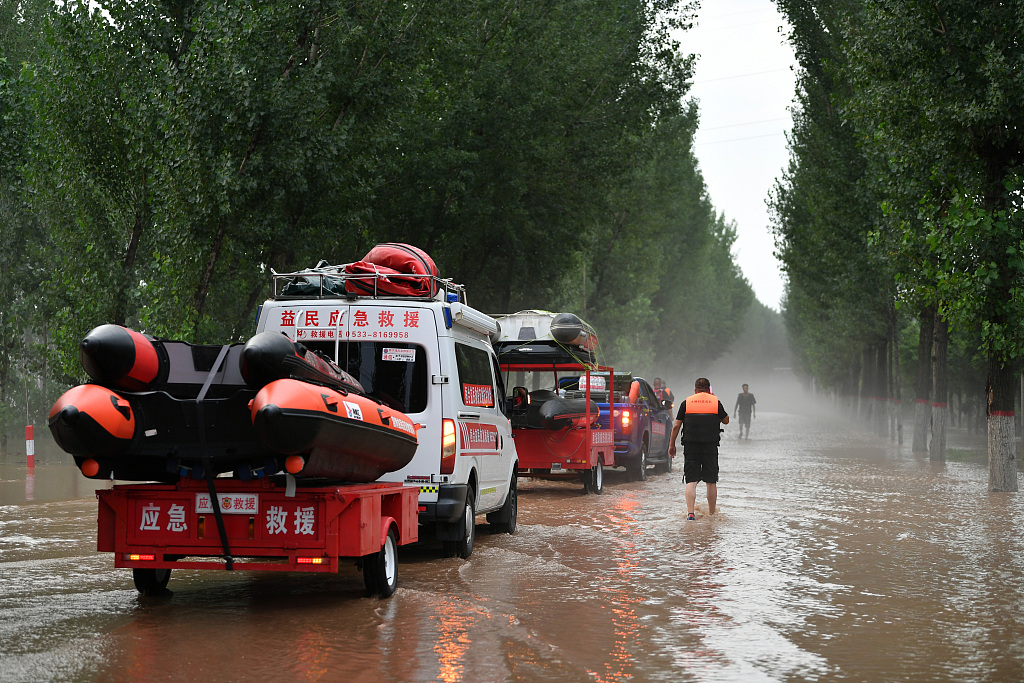Beijing: Triggered by Typhoon Doksuri, torrential rains have battered northern China and the Huang-Huai region since July 29, causing water levels to rise in major rivers. Floods in many places in Hebei Province and the southwest of Beijing have caused casualties and property losses.
Beijing has been drenched with rain in recent days, with the heaviest rainfall since records began 140 years ago, the China Meteorological Administration stated. As of Tuesday, a total of 11 people had died and 27 others remained missing in Beijing, according to local authorities.
The rushing flood caused by the heavy rain swept away cars, turned roads into rivers, triggered mudslides, and caused water and power cuts and communication signal interruptions.
On July 31, the water of the Yongding River surged, and the raging river led to the collapse of the Xiaoqinghe Bridge in Beijing. In order to prevent flooding, Beijing opened the water gate of the Beijing section of the Yongdinghe River on Tuesday.
Three trains bound for Beijing had been stranded in Beijing’s Mentougou District since July 30 due to flooding and mudslides, during which the stranded passengers’ food and drink were bought by the crew and rescuers nearby. So far, the trapped passengers have been safely rescued.
In neighboring Hebei Province, nine people had died and six were missing as of Tuesday, said local authorities.
Zhuozhou, as one of the cities seriously affected by the heavy rain, had many villages flooded and villagers trapped. As of Tuesday, 133,913 people and an area of over 6.5 square kilometers of agricultural land had been affected. So far, the city has set up 28 emergency rescue teams with a total of 8,755 people, together with professional rescue teams, for the disaster relief work.
The flood control in the Haihe River Basin, China’s largest water system in northern China and one of the seven major rivers in China, has entered a critical period as 13 rivers, including the mainstream and tributaries of the Yongding River, had exceeded warning levels by Monday.
Areas around the Haihe River Basin is densely populated as it runs through Beijing, the capital of China, Tianjin, the Hebei, Shanxi, Shandong, Henan and Liaoning provinces, and the Inner Mongolia Autonomous Region.
On Monday night, the State Flood Control and Drought Relief Headquarters, together with the Ministry of Water Resources and other departments, further deployed flood prevention and disaster relief work in affected areas in the Haihe River Basin.
Work teams have been dispatched by the headquarters to Beijing, Tianjin, Hebei, Shanxi and Henan, which have been severely affected by the heavy rain, to help with local flood prevention.
On Tuesday, China’s Ministry of Finance and the Ministry of Emergency Management earmarked 110 million yuan (about $15.35 million) from the central natural disaster relief fund to support rescue and relief work in the Beijing-Tianjin-Hebei region recently hit by torrential rain. –The Daily Mail-CGTN news exchange item






